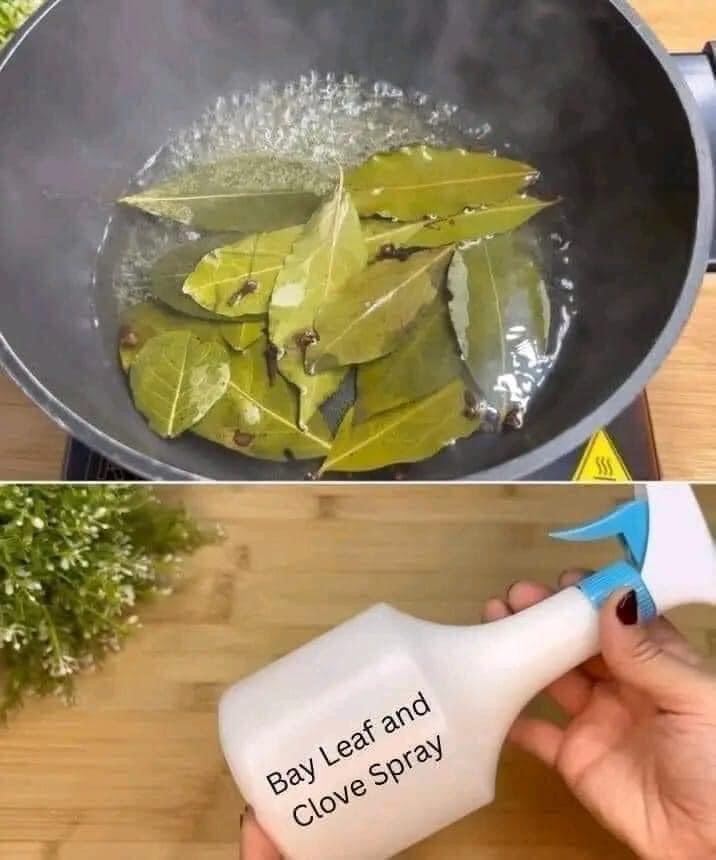Effective Natural Insect Repellents: Say Goodbye to Flies, Mosquitoes, and Cockroaches

Are you tired of pesky flies, mosquitoes, and cockroaches invading your home? Here’s how to make your own natural insect repellents that will help you reclaim your space. With these simple yet effective solutions, you can enjoy a bug-free environment without the use of harsh chemicals. Let’s dive into these DIY recipes!
1. Homemade Mosquito Trap
Ingredients:
- 1 cup of water
- 5 tablespoons of sugar
- 1 tablespoon of yeast
- 1 2-liter plastic bottle
- Tape
- Cardboard or fabric
Instructions:
- Prepare the Mixture: In a pot, mix 1 cup of water with 5 tablespoons of sugar. Dissolve the sugar over low heat, then remove from heat.
- Add Yeast: Stir in 1 tablespoon of yeast into the sugar-water mixture.
- Assemble the Trap: Cut the top off the 2-liter plastic bottle and invert it into the base to create a funnel.
- Fill the Bottle: Pour the sugar and yeast mixture into the bottle.
- Seal and Cover: Seal the top with tape and cover the bottle with cardboard or fabric to keep it dark.
- Place the Trap: Set the trap in areas where mosquitoes are commonly found.
2. Bay Leaf and Clove Spray
Ingredients:
- 1 cup of water
- 15 bay leaves
- 20 cloves
Instructions:
- Simmer Ingredients: In a pot, combine 1 cup of water, 15 bay leaves, and 20 cloves. Simmer for 10 minutes to release the natural scents.
- Transfer to Spray Bottle: Allow the mixture to cool, then transfer it to a spray container.
- Apply: Use this spray in areas where you notice cockroaches, flies, and mosquitoes.
3. Insect-Repellent Spray
Ingredients:
- 1/2 cup of shampoo
- 1/2 cup of white vinegar
- 1/2 cup of vegetable oil
The History of Natural Insect Repellents
Insect repellents have a long and fascinating history, evolving from simple natural remedies to sophisticated chemical formulations. Throughout human history, the need to protect oneself from insect-borne diseases and nuisances has driven innovation and experimentation with various substances.
Ancient Times
In ancient civilizations, people relied on the natural environment to find solutions for insect problems. Here are a few notable examples:
- Egyptians: Ancient Egyptians used aromatic plants and oils to repel insects. They burned incense made from herbs such as myrrh and frankincense to keep bugs away.
- Greeks and Romans: Both cultures used essential oils derived from plants like lavender, rosemary, and peppermint. They also used vinegar and wine mixed with various herbs as insect deterrents.
Middle Ages
During the Middle Ages, people continued to use natural remedies to protect themselves from insects. Herbal sachets and potpourri containing lavender, mint, and other fragrant herbs were common in homes to deter pests. Bay leaves, which are used in the Bay Leaf and Clove Spray recipe, were often placed in grain stores to keep insects away.
Indigenous Practices
Indigenous cultures around the world have their own unique methods for repelling insects. For example:
- Native Americans: Various tribes used a mixture of plants and mud to keep insects at bay. Plants like cedar, pine, and sassafras were commonly used.
- African Tribes: Certain tribes in Africa used the leaves and extracts of neem trees as a natural insect repellent. Neem oil is still used today for its insect-repelling properties.
19th and 20th Centuries
The 19th century saw the introduction of chemical insecticides, but natural repellents were still widely used. With the advent of modern chemistry, compounds like DEET were developed in the 20th century, becoming the standard for insect repellents. However, concerns over chemical safety and environmental impact have led to a resurgence in the use of natural remedies.
Modern Times
Today, there’s a growing trend toward using natural and eco-friendly insect repellents. With increased awareness of the potential health risks associated with chemical repellents, many people are turning back to traditional methods and natural ingredients. Recipes like the Homemade Mosquito Trap, Bay Leaf and Clove Spray, and Insect-Repellent Spray reflect this shift towards sustainable and safe solutions.
Instructions:
- Mix Ingredients: In a container, mix 1/2 cup of shampoo, 1/2 cup of white vinegar, and 1/2 cup of vegetable oil until well combined.
- Transfer to Spray Bottle: Pour the mixture into a spray bottle.
- Apply: Spray in areas where insects such as cockroaches, flies, and mosquitoes are a problem.
Conclusion
With these natural and homemade insect repellents, you can effectively keep flies, mosquitoes, and cockroaches at bay. They’re easy to make, eco-friendly, and free from harmful chemicals. Give these solutions a try and enjoy a pest-free home!